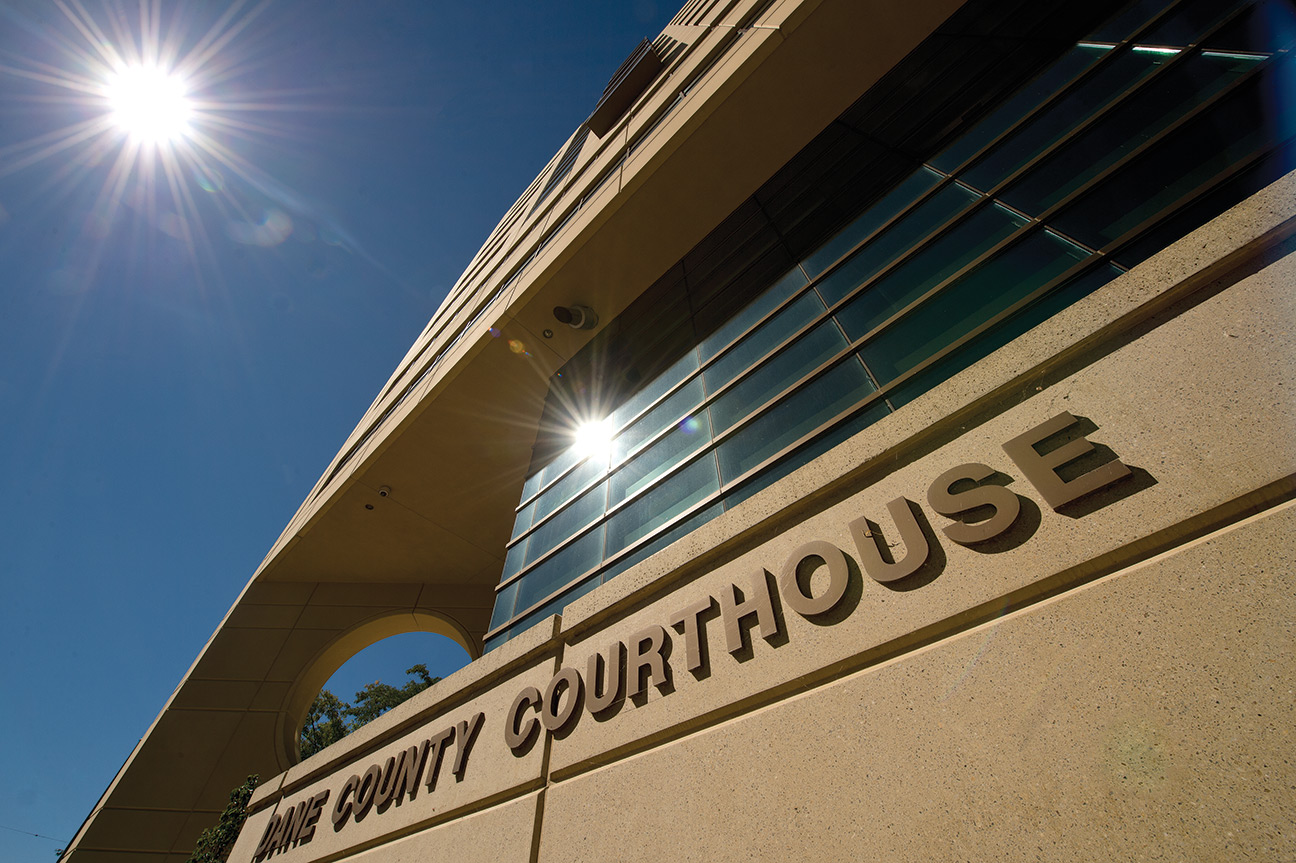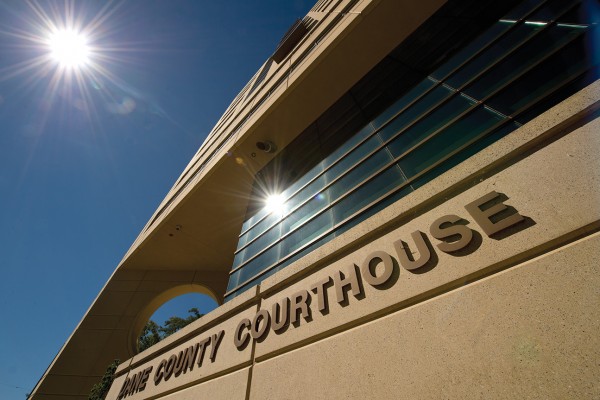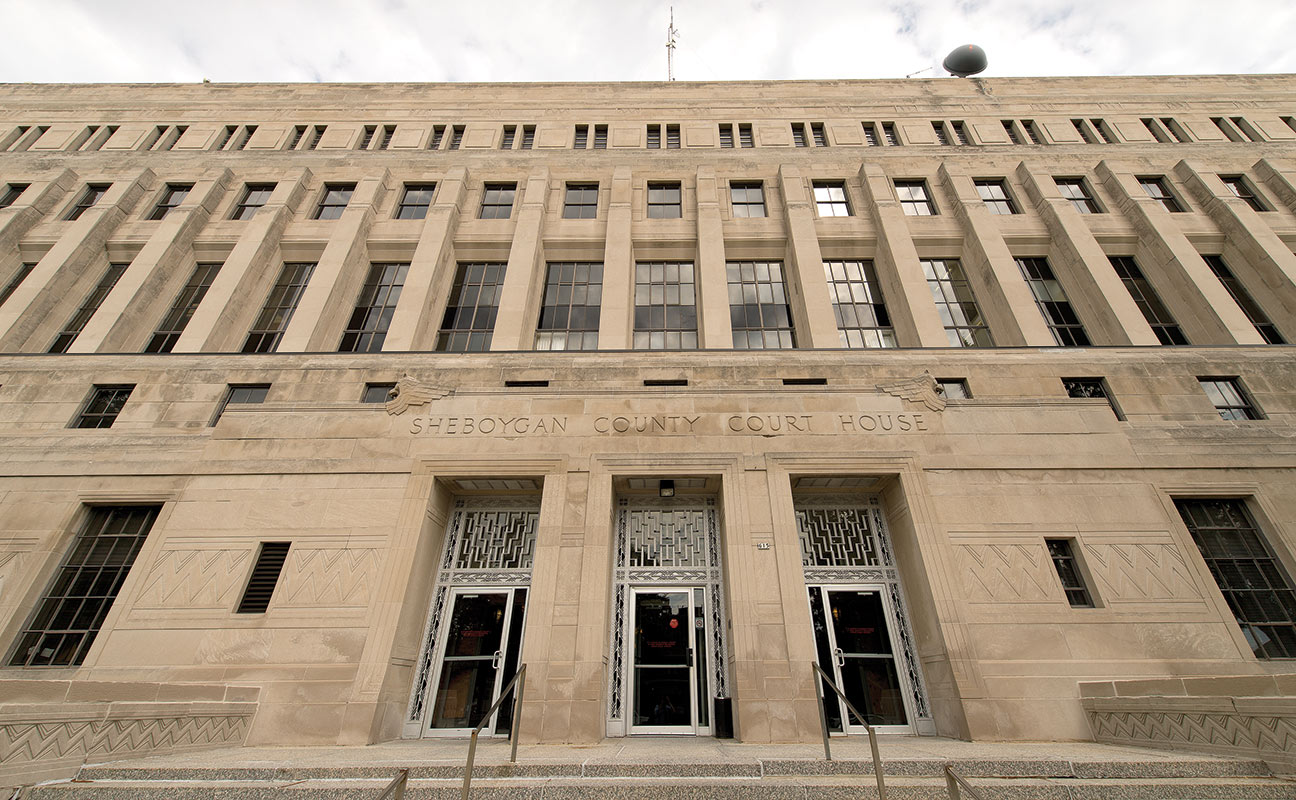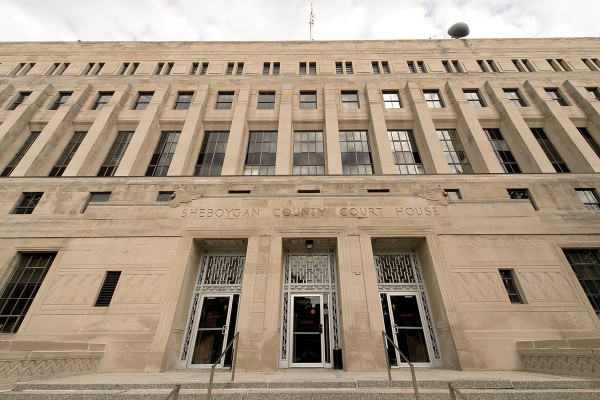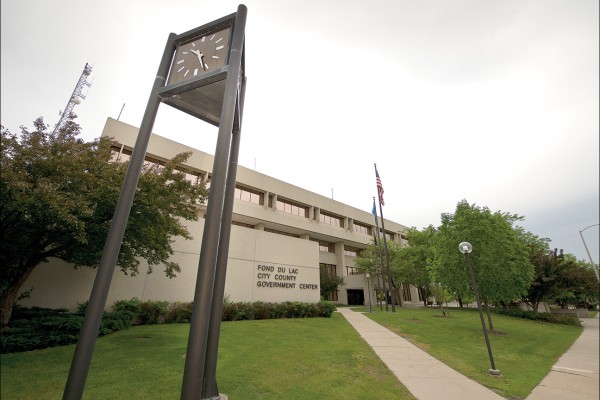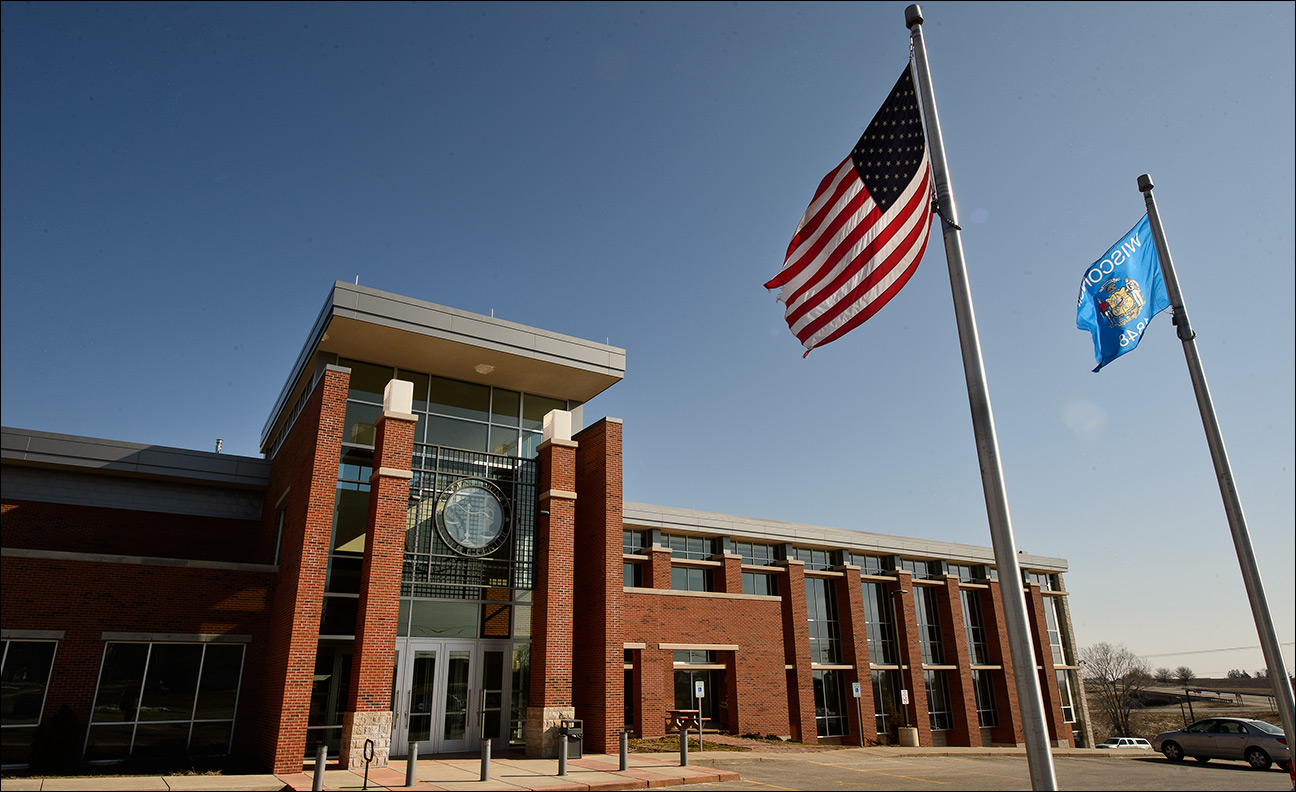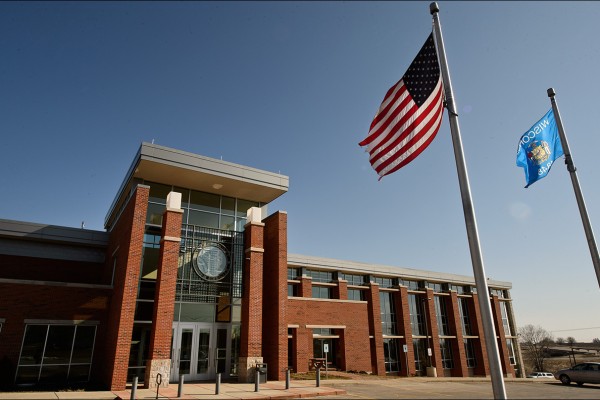Dodge County courthouse putting paper in the past
By: Kirsten Klahn, [email protected]//August 24, 2012//
Dodge County courthouse putting paper in the past
By: Kirsten Klahn, [email protected]//August 24, 2012//
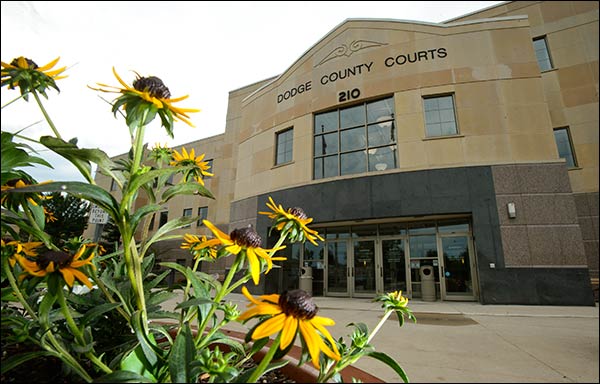
The mountains of paper clogging the Dodge County Justice Facility are disappearing.
In their place are neatly stored computer files and the feeling that the people working in the courthouse are leading the way in embracing new technologies.
But leadership comes with a price.
“Everyone needs to have a can-do attitude and be willing to tweak things,” said Bob Barrington, managing attorney for the Dodge County District Attorney’s Office. “And it can take a lot of extra work at first.”
Time and patience, Barrington said, let his office become paperless in 2009, making it the first in the state to fully do so. The year before, Barrington, surrounded by files and often at a loss to find the documents he needed, began considering the switch.
But paperless DA’s offices were uncommon, and Barrington found that a switch could cost the county hundreds of thousands of dollars. There wasn’t another office to turn to for advice, he said, so he figured out an alternative on his own.
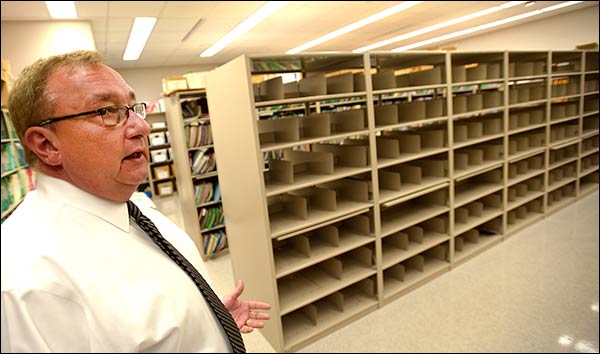
His office already was using a system called Protect Case Management, which widely is used by attorneys to track their cases. He dug a little deeper and found the system could store a complete case file, including his own personal notes.
With practice, Barrington said, entering new files into the system became easy, but it took time to scan all of the old files into the system.
“It was a burden on our legal assistants for a while,” he said.
And there were skeptics, said Dodge County Clerk of Court Lynn Hron. When the DA’s office went paperless, Hron said, she heard concerns from other departments.
“One of the scenarios we heard was: ‘What happens if we lose power?’” Hron said. “There was just this mindset about the possibility of the power going down.”
The files are backed up and stored off-site, Barrington said, creating a reliable and efficient system that has caught the attention of his colleagues around the state and other offices in the Dodge County Justice Facility.
The county’s small claims office went paperless in June, Hron said.
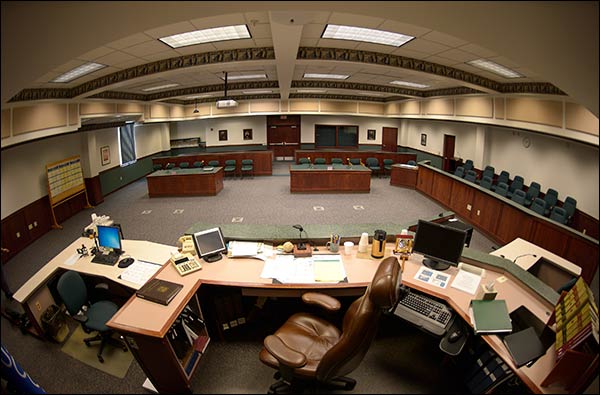
The switch in that office forced employees to make sure bookkeeping was meticulous, said Dodge County Deputy Clerk Bonnie Budde.
“We spend more time entering and explaining each of the files at the beginning of a case,” she said. “It’s more work on the front end, but when the court’s done with the case, we save time not having to file it.”
And the court’s technology now extends to Judge John Storck’s Branch 2 courtroom, which incorporates a mix of equipment such as a blended pilot recording system, video conferencing and an Elmo, which is used for presentations in the courtroom and often costs thousands of dollars.
Storck said circumventing the cost problem forces him, at times, to be creative. eBay has become a go-to site for solving that problem. For example, he said, he buys Elmos on eBay for $175 to $250.
“Some say the courtroom isn’t supposed to look like an office,” he said. “Other judges, like me, are just fine with it.”
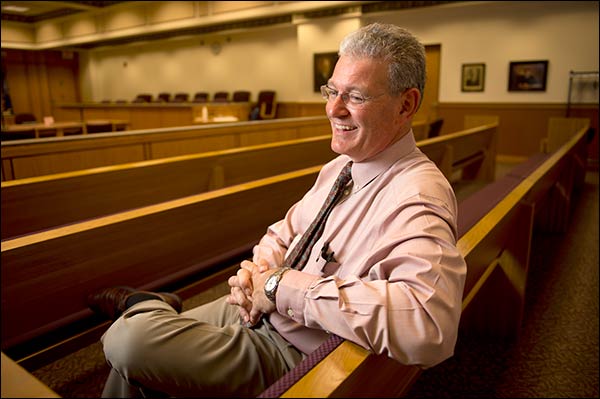
Those hints of resistance to technological change still pop up, Storck said. For instance, he said, he’s still trying to get attorneys to use an e-filing system, which would help courtrooms go paperless.
But there are start-up costs, Storck said, and because the state hasn’t made a push toward the new system, most attorneys don’t know how to use it.
“These are all initial barriers,” he said. “There’s always a mixed acceptance with this stuff.”
Storck said he’s beginning to research electronic filing so he can visit attorneys and discuss it with them.
Courtrooms, he said, owe it to the public to stay on top of technology.
“We need to be just and fair with our rulings, but we also owe it to the public to be doing things as efficiently as possible,” Storck said. “A corporation doesn’t rely on paper files, so why should courts be that far behind other businesses?
“We just shouldn’t be generations behind when it comes to technology.”
Legal News
- Former law enforcement praise state’s response brief in Steven Avery case
- Eric Toney announces re-election bid for Fond du Lac County District Attorney
- Former Wisconsin Democratic Rep. Peter Barca announces new bid for Congress
- Republicans file lawsuit challenging Evers’s partial vetoes to literacy bill
- More human remains believed those of missing woman wash up on Milwaukee Co. beach
- Vice President Harris returning to Wisconsin for third visit this year
- Wisconsin joins Feds, dozens of states to hold airlines accountable for bad behavior
- Trump ahead of Biden in new Marquette poll
- Bankruptcy court approves Milwaukee Marriott Downtown ‘business as usual’ motion
- New Crime Gun Intelligence Center to launch in Chicago
- Arrest warrant proposed for Minocqua Brewing owner who filed Lawsuit against Town of Minocqua
- Wisconsin Supreme Court justices question how much power Legislature should have
WLJ People
- Power 30 Personal Injury Attorneys – Russell Nicolet
- Power 30 Personal Injury Attorneys – Benjamin Nicolet
- Power 30 Personal Injury Attorneys – Dustin T. Woehl
- Power 30 Personal Injury Attorneys – Katherine Metzger
- Power 30 Personal Injury Attorneys – Joseph Ryan
- Power 30 Personal Injury Attorneys – James M. Ryan
- Power 30 Personal Injury Attorneys – Dana Wachs
- Power 30 Personal Injury Attorneys – Mark L. Thomsen
- Power 30 Personal Injury Attorneys – Matthew Lein
- Power 30 Personal Injury Attorneys – Jeffrey A. Pitman
- Power 30 Personal Injury Attorneys – William Pemberton
- Power 30 Personal Injury Attorneys – Howard S. Sicula





